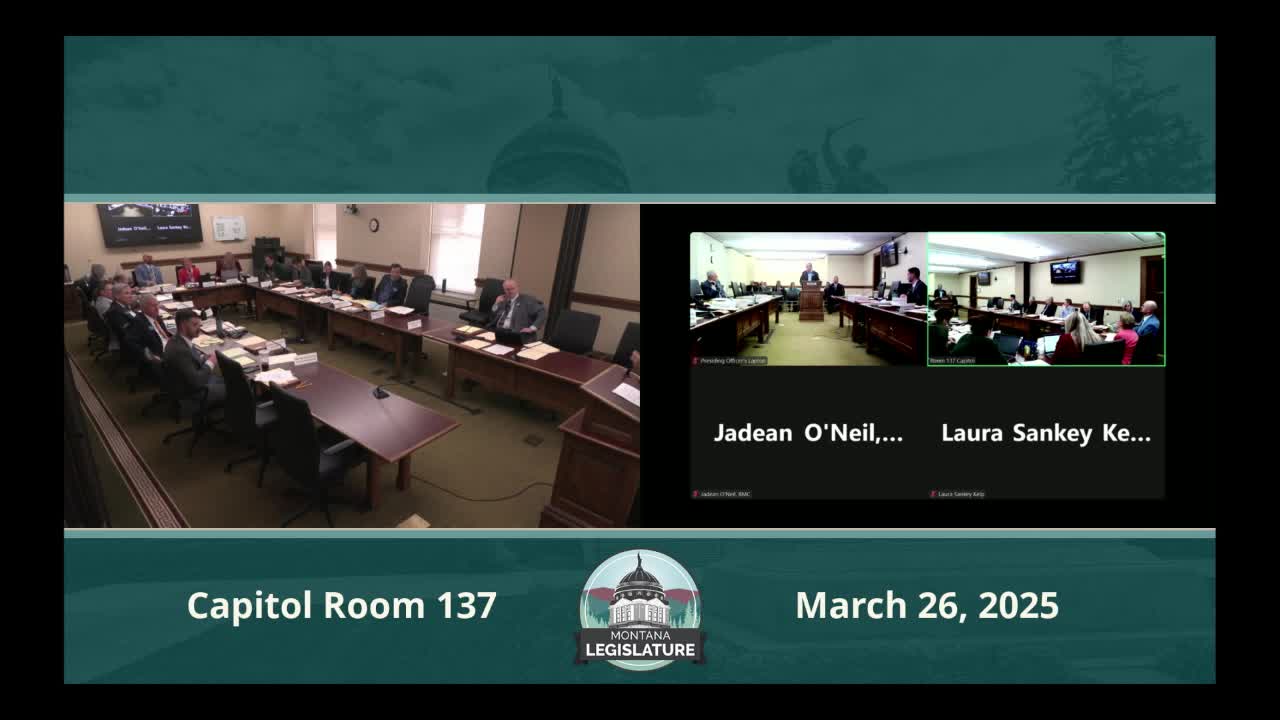Representative Eiseley presents House Bill 837 to support new teacher mentorship in Montana
March 26, 2025 | 2025 Legislature MT, Montana
This article was created by AI summarizing key points discussed. AI makes mistakes, so for full details and context, please refer to the video of the full meeting. Please report any errors so we can fix them. Report an error »

A recent meeting of the Montana Legislature's House Education Committee highlighted a significant initiative aimed at supporting new teachers in the state. Representative Eiseley introduced House Bill 837, which seeks to establish a structured mentoring program pairing retired teachers with newly hired educators. This initiative is designed to provide essential guidance and support during the critical early months of a teacher's career.
The bill builds on the earlier "easy peasy" legislation, allowing retired teachers to mentor without affecting their retirement benefits. Eiseley emphasized the importance of this program, stating that it aims to equip new teachers with "Monday morning ready knowledge" to ensure a smooth transition into their roles. The proposed program would limit mentoring sessions to 36 hours over the first three months of the school year, focusing on practical classroom management and curriculum delivery.
The financial aspect of the bill includes a proposed appropriation of $100,000 from the state general fund for each year of the biennium. This funding is intended to help schools, particularly those in rural areas, develop robust mentoring programs that meet accreditation standards. Supporters of the bill, including former educators and representatives from the Montana Federation of Public Employees, voiced their approval, highlighting the critical role mentoring plays in teacher retention and the overall success of educational programs.
The committee discussed the potential impact of the bill, with estimates suggesting that the funding could support mentoring for approximately 100 new teachers statewide. Advocates stressed that this initiative is a step toward addressing the ongoing challenges of teacher recruitment and retention in Montana's public schools.
As the committee continues to deliberate on House Bill 837, the focus remains on enhancing the support system for new educators, ultimately benefiting students and the broader community. The next steps will involve further discussions and potential amendments to ensure the program effectively meets the needs of Montana's educational landscape.
The bill builds on the earlier "easy peasy" legislation, allowing retired teachers to mentor without affecting their retirement benefits. Eiseley emphasized the importance of this program, stating that it aims to equip new teachers with "Monday morning ready knowledge" to ensure a smooth transition into their roles. The proposed program would limit mentoring sessions to 36 hours over the first three months of the school year, focusing on practical classroom management and curriculum delivery.
The financial aspect of the bill includes a proposed appropriation of $100,000 from the state general fund for each year of the biennium. This funding is intended to help schools, particularly those in rural areas, develop robust mentoring programs that meet accreditation standards. Supporters of the bill, including former educators and representatives from the Montana Federation of Public Employees, voiced their approval, highlighting the critical role mentoring plays in teacher retention and the overall success of educational programs.
The committee discussed the potential impact of the bill, with estimates suggesting that the funding could support mentoring for approximately 100 new teachers statewide. Advocates stressed that this initiative is a step toward addressing the ongoing challenges of teacher recruitment and retention in Montana's public schools.
As the committee continues to deliberate on House Bill 837, the focus remains on enhancing the support system for new educators, ultimately benefiting students and the broader community. The next steps will involve further discussions and potential amendments to ensure the program effectively meets the needs of Montana's educational landscape.
View full meeting
This article is based on a recent meeting—watch the full video and explore the complete transcript for deeper insights into the discussion.
View full meeting
